

271 Years Before Pantone, an Artist Mixed and Described Every Color Imaginable in an 800-Page Book. In 1692 an artist known only as “A.
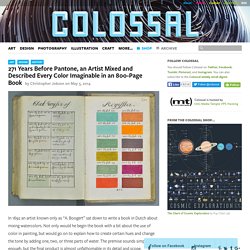
Boogert” sat down to write a book in Dutch about mixing watercolors. Not only would he begin the book with a bit about the use of color in painting, but would go on to explain how to create certain hues and change the tone by adding one, two, or three parts of water. The premise sounds simple enough, but the final product is almost unfathomable in its detail and scope. Spanning nearly 800 completely handwritten (and painted) pages, Traité des couleurs servant à la peinture à l’eau, was probably the most comprehensive guide to paint and color of its time. According to Medieval book historian Erik Kwakkel who translated part of the introduction, the color book was intended as an educational guide.
Wool Jersey and Rib Knit Fabric, Wool Knit Fabrics. Freakin' Sweet Knots. A blog about sculptures by Johnson Tsang. Matt Fiske Ceramics. A Potter's Perspective on Art, Nature, Ceramics, and Science. Petr Novák's (Petr_Novak) bucket. Porcelain ceramics: handmade porcelain tableware, one of a kind, personalized gifts, home decor, wedding registry, made in Pawtucket, Providence, RI, USA. Japanese Pottery Primer - EY Net. Although you don't need to know much about Japanese pottery to enjoy using it, there is a fascinating culture just below the surface (regional styles, histories, influence from China and Korea, and much more).
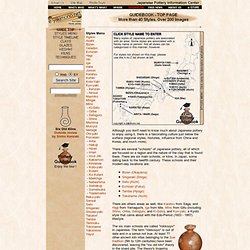
There are several "schools" of Japanese pottery, all of which are focused on a region and the nature of the clay that is found there. There are six main schools, or kilns, in Japan, some dating back to the twelfth century. These schools and their modern-day locations are: There are others areas as well, like Karatsu from Saga, and Hagi from Yamaguchi, Iga from Mie, Mino from Gifu (including Shino, Oribe, Setoguro, and Ki-Seto), and Kyo-yaki, a Kyoto style that came about with the Edo-Period (1603 - 1867) lifestyle. The six main schools are called "rokkouyo" in Japanese.
International Ceramics Festival MINO,Japan. M I Y A M U R A - gallery. Highest Quality Teapots (Kyuusu) for Japanese Green Tea & Matcha. Available Stock of Japanese Teapot. HOME >Japanese Tea Pot >Available Lineup Please note that the reservation of item is only valid for ONE month from the date of the price quoted.

After One month, the item will be automatically released without prior notice, except we receive further update from customer. Kobiwako Clay Teapot We found this clay near the borders of Iga and Shigaraki where it used to be at the bottom of the Biwa Lake way back 4-6 million years ago. The clay from these areas is rich in alkaline mineral such as calcium and potassium that contributes a lot to the body of a tea.
The Kobiwako clay improves the after taste as well as body. For those who wish to combine with tetsubin, here is our finding: Kobiwako Oxidation Clay: Suzuki Morihisa or Kunzan SatetsuKobiwako Reduction Clay: Kunzan We worked side by side with Junzo Maekawa who is the artist from Tokoname. Kobiwako Side Handle Teapot with Direct Hole Filter Kobiwako Side Handle Teapot with Sasame Filter. RISD Alumni Art Sales. Who can participate in a RISD Alumni Art Sale?
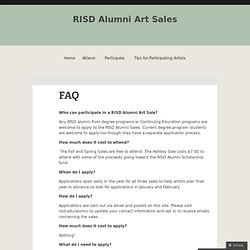
Any RISD alumni from degree programs or Continuing Education programs are welcome to apply to the RISD Alumni Sales. Current degree program students are welcome to apply too though they have a separate application process. How much does it cost to attend? The Fall and Spring Sales are free to attend. The Holiday Sale costs $7.00 to attend with some of the proceeds going toward the RISD Alumni Scholarship fund.
When do I apply? Applications open early in the year for all three sales to help artists plan their year in advance so look for applications in January and February. How do I apply? Applications are sent out via email and posted on this site. Artist Puts 21st-Century Gadgets Into Famous Masterpiece Paintings. EmailEmail Korean Illustrator Kim Dong-Kyu has created a clever and comical series of images on his “Art X Smart” Tumblr that re-imagines old famous masterpieces for the 21st century by introducing modern smartphones, tablets and laptops.
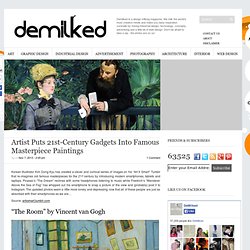
Picasso’s “The Dream” reclines with some headphones listening to music while Friedrich’s “Wanderer Above the Sea of Fog” has whipped out his smartphone to snap a picture of the view and (probably) post it to Instagram. The updated photos seem a little more lonely and depressing now that all of these people are just as absorbed with their smartphones as we are… Source: artxsmart.tumblr.com “The Room” by Vincent van Gogh. Eggshell Carving by Brian Baity. Article by James Pond I am the owner of Pondly.com / art lover / electrical engineer / software developer / MBA in e-business student.
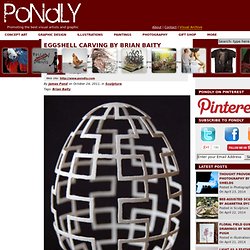
I blog for pleasure and love to share my Internet findings. Web site: Brian Baity uses a high speed carving tool to carefully carve unique designs on fragile egg shells and transforms them into unique pieces of art. Website Do you want more visual fun?